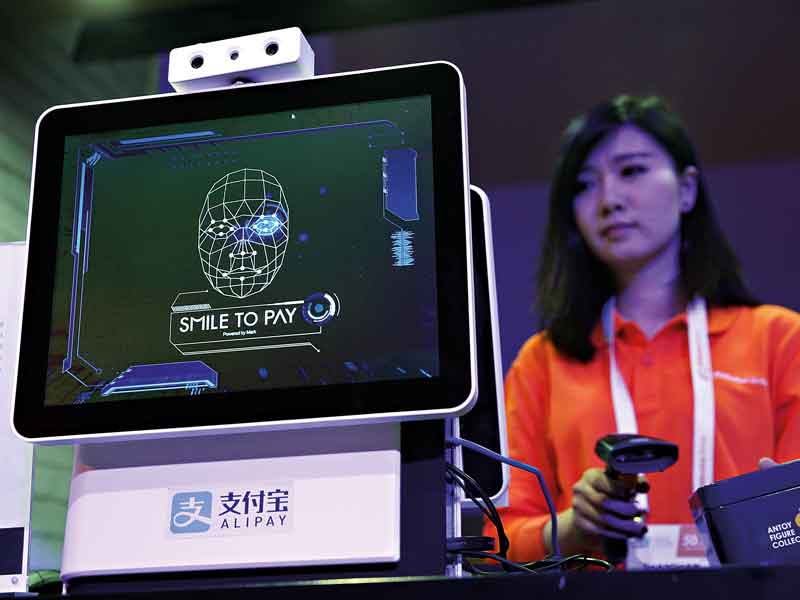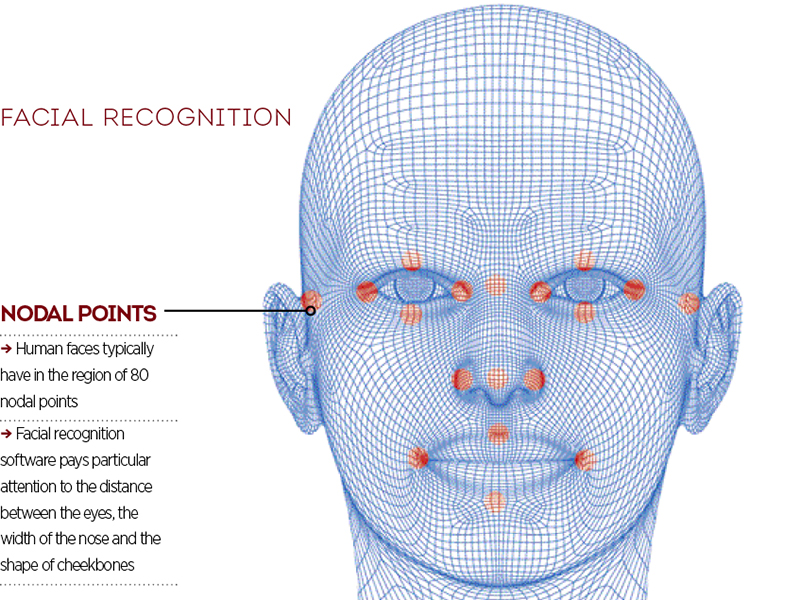Facial recognition is rapidly progressing, but at what cost to privacy?
The rapid uptake of facial recognition technology is unsettling, but how does it work, and can it be fooled?

An Alibaba employee demonstrates Smile to Pay, an automatic payment system that authorises payment via facial recognition
The advance in facial recognition technology is both remarkable and chilling in equal measure. According to its own data, Facebook’s facial recognition software is able to correctly identify a person’s face 98 percent of the time. Under the right conditions, some systems now boast 100 percent accuracy.
The technology’s applications have already entered the realms of science fiction; for example, the Chinese Government currently uses facial recognition software to catch jaywalkers, seek out seasoned criminals and even identify toilet roll thieves in public washrooms.
Commercial applications have also spiralled, with retailers adopting software that can identify customers and track their shopping habits through the use of CCTV.
In Russia, an app called FindFace can identify strangers with 70 percent accuracy by analysing data from a social network called VKontakte. The most unnerving application of all, however, is the recent discovery by Stanford academics that facial recognition software can identify men’s sexual orientation with 81 percent accuracy.
The face of it
Facial recognition technology traditionally works by identifying the ‘nodal points’ of one’s face, with each point acting as a coordinate for distinguishing the position of a person’s features.
Once all nodal points have been identified (human faces typically have in the region of 80) a machine will construct an image of the facial structure, known as a faceprint.
Though the true potential of facial recognition technology is still unknown, our anonymity does appear to be shrinking
When constructing the faceprint, the software pays particular attention to landmark measurements such as the distance between the eyes, the width of the nose and the shape of cheekbones. This information is then stored on a database so the same face can be identified and verified at a later date.
While this face mapping technique forms the basis of most facial recognition software, it often runs into problems, with many aspects of a person’s face being changeable. For instance, face mapping can be thrown by different camera angles, lighting, ageing or emotions.
98%
Success rate of Facebook’s facial recognition software
81%
Success rate when establishing men’s sexual orientation
55%
Success rate when identifying someone in a scarf, hat and sunglasses
Many such issues have started to be ironed out with the emergence of sophisticated 3D sensors, such as those developed by Apple for the new iPhone X. These sensors enable facial recognition software to gauge depth as well as just the distance between nodal points. By constructing a 3D image, the software can more accurately map important features such as the contour of eye sockets, the nose and jaw.
While 3D sensors are entering the mainstream, the accuracy of traditional facial recognition technologies continue to be watered down by the usual issues of tricky camera angles, lighting and photo resolution.
Therefore, when put to use in public places – through surveillance cameras, for example – the technology will continue to make mistakes. However, while it remains imperfect, its accuracy is steadily improving.
Code camouflage
But as facial recognition software continues to develop, so do people’s attempts to thwart it. Perhaps the most common effort to circumvent the technology is the scarf, hat and sunglasses approach, which simply aims to prevent the software from taking an accurate reading of one’s nodal points.
The effectiveness of this technique has been thrown into some doubt, however, with new research from academics at the University of Cambridge suggesting facial recognition technology can still recognise individuals wearing the full triad of accessories 55 percent of the time.
A more promising technique is to don clothes that are covered with images of faces. This works by confusing the machine; crowding it with hundreds of faces that distract from your own.

Another approach, developed by artist Adam Harvey, is to use hair and makeup techniques to trick the software by throwing off its symmetry trackers. There are plenty more examples of such experiments, from light-reflecting masks to infrared ‘privacy visor’ glasses – all of which function with varying degrees of success.
Though the true potential of facial recognition technology is still unknown, our anonymity does appear to be shrinking. Thus, we can expect the market for anti-surveillance products to expand in equal measure, matching developments in facial recognition blow-for-blow in the ultimate battle to save face.













